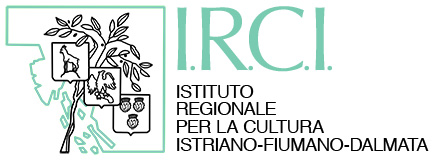The creation of a museum dedicated to the preservation of the North and East Adriatic cultural and social identities was a natural consequence of the establishment of the former “permanent Institution”, then Regional Institute for the Istrian Culture (I.R.C.I.) and finally Regional Institute for the Istrian, Fiuman and Dalmatian Culture (amd. 17.4.2000, 612/3). According to article 5, regional law 62/1983, the institute must perform the task of “preserving and promoting the Istrian population’s historical and cultural heritage, as well as their habits and traditions”.
In order to accomplish the task, the institute needed appropriate structures, which were difficult to obtain. In the meantime, art. 38 of the Regional Law 33/1986, amended by art. 34, Regional Law 14/1994, provided for € 250 million to be allocated for this purpose in the regional budget. This money was used to set up an internal telematic network and the digitalization of the institute. After numerous unsuccessful attempts, the situation was solved by an agreement with the municipality of Trieste. The municipal council, in compliance with ruling no. 607 of 25.5.1998, “grants I.R.C.I. the concession of the municipal real estate in via Torino 8. Bearing in mind the demands of the Association, this location seems appropriate for the setting-up of the library, the archive, the study and data processing centre, along with the association offices and a museum that would preserve traditions, history, arts and crafts of these lands”.
However, the financial conditions imposed by the above-mentioned council ruling being too demanding, the Institute started a long series of negotiations with the municipal council. In the end the municipal Council stipulates in a letter addressed to the chair of the association of 26.5.1999 that “a project for the setting- up of a museum of Istrian culture inside the building in via Torino. The municipality of Trieste takes all responsibility for the adaptation, arrangement and management of the premises. The scientific decisions must be carried out by an experts’ commission...in the context of a mutual arrangement”.
The I.R.C.I General Assembly, acting by unanimity of its members, approved the proposal made by the municipal Council on the session of 27.5.1999, indicating that “all works and costs for adaptation, arrangement and management of the premises are responsibility of the Municipality. Equipment and materials remain the property of the Institute. Its registered office, the library and the archive will be located in the same premises”.
It should be pointed out that I.R.C.I. and the Municipality of Trieste have concluded an agreement and that precise indications on the use of the building will be established by a “scientific commission” with experts from both contracting parties.
A remarkable quantity of material is already available: household objects and artifacts of the Istrian refugees left in a storage room of the old harbour “Punto Franco Vecchio” of Trieste. The property of these items was handed over to I.R.C.I. by the Prefecture of Trieste in 1988 in accordance with a decision of the Minister for Home Affairs. They have been recently selectioned, catalogued and relocated to Magazzino 18 (part of the old harbour).
The collection grows every day that passes, thanks to new donations or acquisitions of historical, ethnographic artifacts, as well as tools and various instruments.
In addition to this mainly ethnographic section, the library and the archive explore other topics thanks to continuous acquisitions of papers, written testimonies, textbooks from families and experts belonging to that culture, who sometimes had a direct experience of the troubled history of the Julian and Dalmatian lands.
This prestigious venue is the perfect place to highlight how much value we attach to this collection. Modern technologies and new communication tools will play a crucial role in our cultural promotion program for a civilization that would otherwise disappear.
This initiative can be a success story precisely because the museum, the registered office, the library and the archive, apart from being interconnected through a digital communication system, are also located in the same premises.


